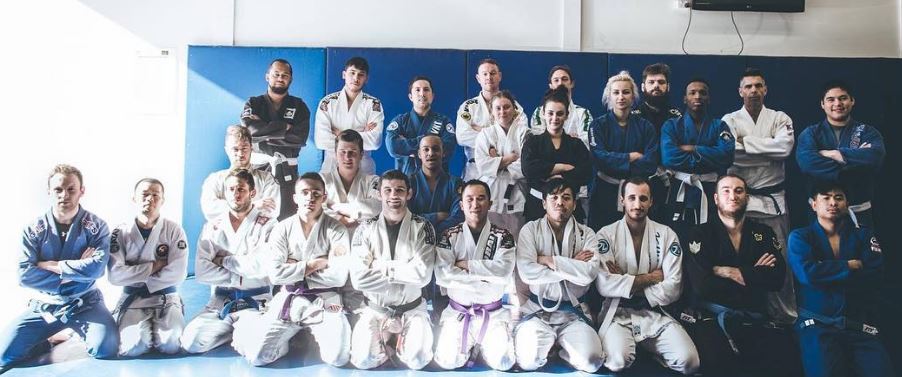BJJ, Denis's Blog
My Jiu Jitsu class format
I began teaching jiu jitsu full time eight years ago and I’ve been experimenting with various methods of running classes ever since. Tweaking the formats to see what works best.
I have trained at a lot of different BJJ academies across the world and I have tried to implement the best ideas I’ve come across when running my own classes.
This is the format for my Intermediate classes which are an hour and half, I will cover my Beginners program in another article.
Weekly Schedule
One of the first things I did when I started teaching was to create a weekly schedule focusing on a different theme every week. I think this is much more efficient than just having an instructor turn up and teach whatever ever he feels like that day as it ensures all the important areas of BJJ are covered.
I’ve changed around my weekly schedule many times since I began Teaching but my current system is as follows.
Week 1 – Guard Passing 1 – Passing Closed Guard and Half Guard
Week 2 – Guard Passing 2 – Passing Open Guards
Week 3 – Closed Guard 1 – Revision of Submissions, Sweeps & Transitions from Closed Guard
Week 4 – Closed Guard 2 – Using Combinations of Submissions, Sweeps and Transitions
Week 5 – Half Guard Bottom – Submissions, Sweeps & Transitions from Bottom Half Guard.
Week 6 – Open Guard 1 – Focusing on Basic Open Guard, Butterfly Guard & Sitting Guard
Week 7 – Open Guard 2 – More Advanced Open Guards such as De La Riva & X Guard
Week 8 – Top Control Positions – Side Control, Kesa Gatame, Knee on Belly
Week 9 – Mount – Control, Submissions & Transitions from Mount Position
Week 10 – Back Control – Taking the Back from various positions & Submissions from Back Control
Week 11 – Turtle Position – Submissions, Turnovers and Transitions from Turtle & Front Headlock
Week 12 – Leg-locks – Entries, Setups, Controls and finishes for Leg-lock Submissions
Week 13 – Escapes 1 – Positional Escapes
Week 14 – Escapes 2 – Escapes from Submissions
Intermediate Class Format
Warm-Up
Takedown Technique
Ground Techniques
Specific/Positional Sparring
Free Sparring
Warm Up
I’ve experimented with a few different options for Warm Ups over the last couple of years from high intensity cardio warm up to completely skipping the Warm up altogether and just getting straight into drilling techniques. At the minute we are doing some functional warm up exercises and a sequence of BJJ specific movements such as Technical Stand ups, Oma Plata Stretch and Sit outs. I have found these work really well as they get the students warm but also get them doing moving the right way which transfers well into the skills training.
Take-down Technique
I teach one takedown technique at the beginning of every class. We work Judo throws on the Gi training nights and Wrestling Take-downs on NoGi nights. I feel its important that all students have at least some basic level of Takedown ability in order to progress in BJJ. Although BJJ is primarily a Ground-Fighting art, its very important to learn how to take an opponent to ground in order to use your techniques.
Ground Techniques
Next we move on Techniques on the ground based on the theme we are covering that week. I encourage my students to drill as many reps as possible and try to make each rep as perfect as possible. I’ve seen many differing opinions on the value or effectiveness of drilling techniques throughout the last 25 years that I’ve been training in martial arts. Some people believe that drilling techniques is a waste of time and that students should just roll. Although I think this method may work for the exceptionally talented athlete I’ve found that the average student paying to learn Jiu Jitsu just will not make much improvement unless they put in the time drilling the techniques over and over to build muscle memory.
Specific/Positional Sparring
This is where we take the techniques that we’ve drilled and try to apply them against resistance. I use a wide variety specific sparring drills that I use in this portion of the class. I have different Drills that I use depending on what we are working on that week. For example, during Side Control week we might just spar with one person starting on top in side control and also building up the objectives for each round. Round One might be Top person just pinning / holding while the bottom player tries to recover guard. Round Two we might move on to Top Player also trying to get to Mount or Back Control.
Here’s another article with more detail on the benefits of Positional or Isolation Sparring Drills.
Free Sparring
In the last section of the class we put it altogether in Free Sparring. We usually do 5 x 5 Minute rounds with 30 second rest between rounds. We encourage everyone to do every round of sparring unless there is uneven numbers in the class. If a student feels that their cardio isn’t good enough to roll every round I’ll just tell them to roll at a pace they can sustain for the rest of the class rather than going crazy for one round then having to sit out for the next 25 minutes. We also have a zero tolerance policy for dangerous sparring in class. All techniques must be performed in a safe and controlled partner. If you hurt your training partner and he cant roll the next round that means you have to sit out the next rounds too.
As previously mentioned I am continually tweaking and adjusting my class formats and adding new techniques and drills based on what I learn in my own training but I’ve found that I’ve seen really good results with my students using this format.
 enquiries@acsamelbourne.com.au
enquiries@acsamelbourne.com.au 1800736888
1800736888 +61418638273
+61418638273

About Australian Combat Sports Academy
Australian Combat Sports Academy is Melbourne’s #1 destination for Muay Thai, Brazilian Jiu Jitsu and Mixed Martial Arts (MMA). Get started and book a free tour today!